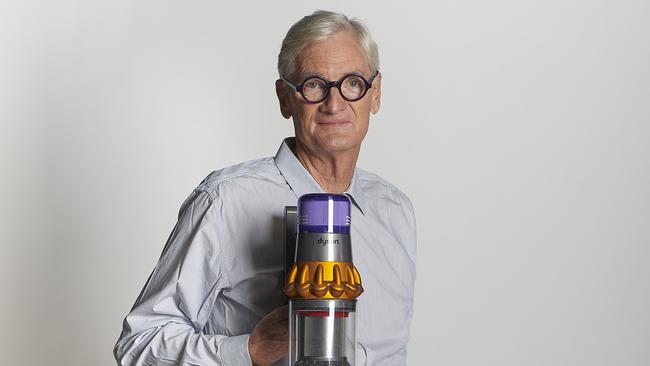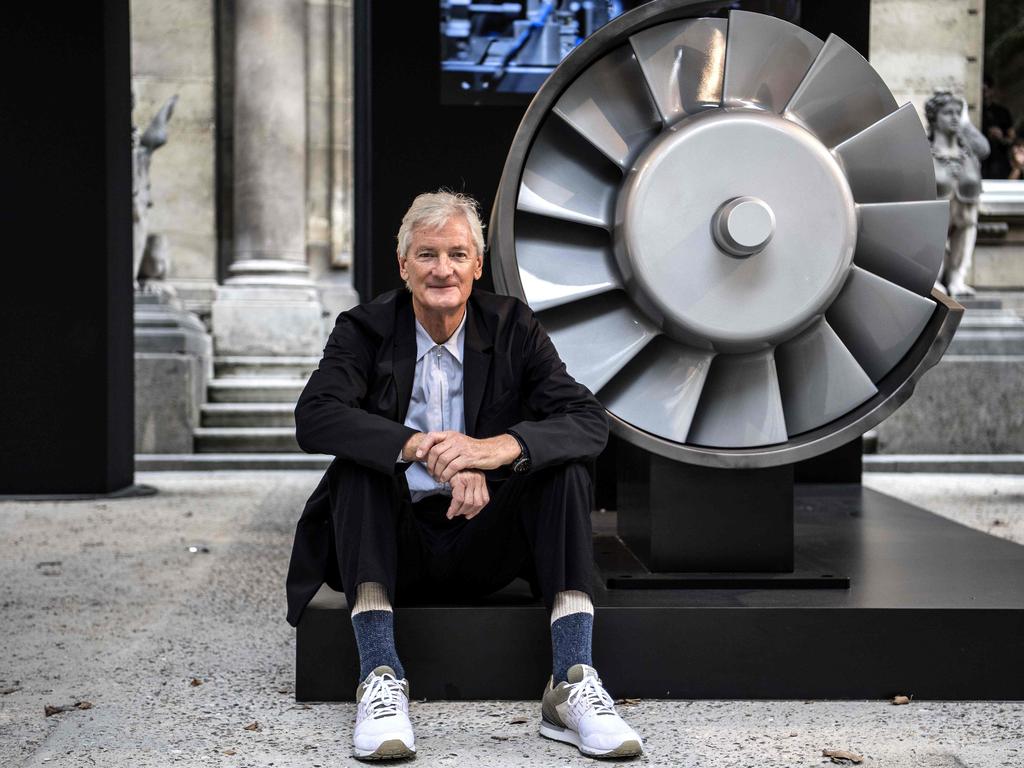James Dyson’s autobiography pits him against the tide
The billionaire inventor pulls no punches when it comes to the complacency — and snobbery — of his countrymen.

It is refreshing to read the autobiography of a prominent self-made billionaire with no interest in starring in an awkward, egocentric publicity stunt. On the 4th of July this year, Mark Zuckerberg “celebrated” Independence Day by posting a video of himself riding an electric surfboard while holding an American flag to the strains of John Denver’s Country Roads. A seemingly blissed-out Richard Branson took an enormously expensive joy ride into space with a privileged few of his high-fiving inner circle. Even Elon Musk, who is a serious engineer, bizarrely presided over the shattering of the side windows of his “unbreakable” electric truck prototype at the launch.
WTF, you might be moved to exclaim.
Sir James Dyson is not the sort of person to waste valuable time and resources in this fashion. According to this engrossing memoir, Dyson’s heroes are not his flashier contemporaries but old school designers and engineers like Alec Issigonis, who gave us the original Mini, the legendary Citroën automotive engineer André Lefèbvre, who was largely responsible for the DS and 2CV, and Soichiro Honda, whose company’s Honda 50 low-cost motorcycle is rated by Dyson as one of the greatest achievements in the history of mass production.
Like his exemplars, Dyson is interested in producing innovative new products that solve basic design problems with intelligence and ingenuity and fit in with everyday life. Before making his name and fortune with the bagless vacuum cleaner, Dyson had taken the humble wheelbarrow, whose design essentially had not changed since ancient Roman times, and replaced the wheel with a sphere that provided a new level of stability and traction.
Dyson’s one big mistake with the Ballbarrow, he says, was to allow other people to control the commercial destiny of his invention. Dyson says that experiencing failure is the only way to learn – one of the best chapters in this book concerns the electric car that Dyson spent billions developing before deciding it didn’t work well enough as a commercial proposition and would be shelved.
Famously, Dyson produced more than 5000 prototypes of his cyclonic bagless vacuum cleaner before perfecting the device. In this book Dyson recounts how the established manufacturers of vacuum cleaners showed no interest whatsoever in the invention, and indeed had long since stopped improving their own inefficient machines.
One reason for the corporate complacency was that cleaner replacement bags represented a highly profitable part of the business for the manufacturers.
“With no outside challenges, they could afford to rest on their laurels. For the moment at least.” Unable to satisfactorily licence his invention, Dyson, who has spent most of his working life heavily in debt with business loans, decided to take the supreme financial and reputational risk of manufacturing and marketing the device entirely himself.
Born in 1949, Dyson characterises himself as someone shaped by the best and worst of the Britain of his generation.
Post-war austerity encouraged self-reliance and forced people to make things for themselves rather than simply buy them. Though his family was not rich, Dyson received a high-quality classical education that encouraged creativity and critical thinking.
Dyson’s academic record was spotty, but he had the freedom to teach himself how to make things. He says he also gained valuable life lessons from sport, becoming a dedicated cross-country runner who learned patience and endurance. Perhaps most important of all, when Dyson was growing up Britain still had national self-confidence. “Whatever the ups and downs of my schooldays, I was aware of a much wider life around me. To be British in the 1950s was nothing to sneeze at.”

Britons like Dyson were taught a version of history that emphasised technological progress, global trade and a “pioneering spirit”. For his generation, he writes, the Commonwealth “seemed a noble replacement for an empire that had coloured a quarter of the land in our school atlases pink”.
But that inner confidence that came from being British, Dyson says, soon lapsed into complacency. After the brief cultural renaissance of the Swinging Sixties, Dyson describes living through the rapid decline of British industry in the 1970s. For this disaster, Dyson blames poor management rather than militant unionism. British cars and other manufactured goods did not sell, he believes, because for the most part they were inferior to those produced in countries like Germany.
Dyson also blames British class snobbery for undervaluing people who make useful products rather than those who live off the efforts of others. “Anything to do with politics, the military, the law, the established Church, the arts and, above all, making money from money with as little effort as possible, was good. Making anything by hand and, far worse, by machinery in factories, was very bad form indeed.”
These days, Dyson products are made in countries like Singapore and Malaysia. In Britain, meanwhile, Dyson has invested vast amounts in encouraging and developing young engineers by establishing his own private institute of technology, which employs students as well as enrolling them.
Dyson has no intention of taking his hugely successful company public or compromising his hard-won position as someone who only makes the things he wants to make. “I want to think about the future and to keep going forward with invention, engineering, design, technology and products even if this means sailing against the prevailing tide and into those uncharted waters I find so enticing.”
Simon Caterson is a writer and critic.
Invention: A Life






To join the conversation, please log in. Don't have an account? Register
Join the conversation, you are commenting as Logout